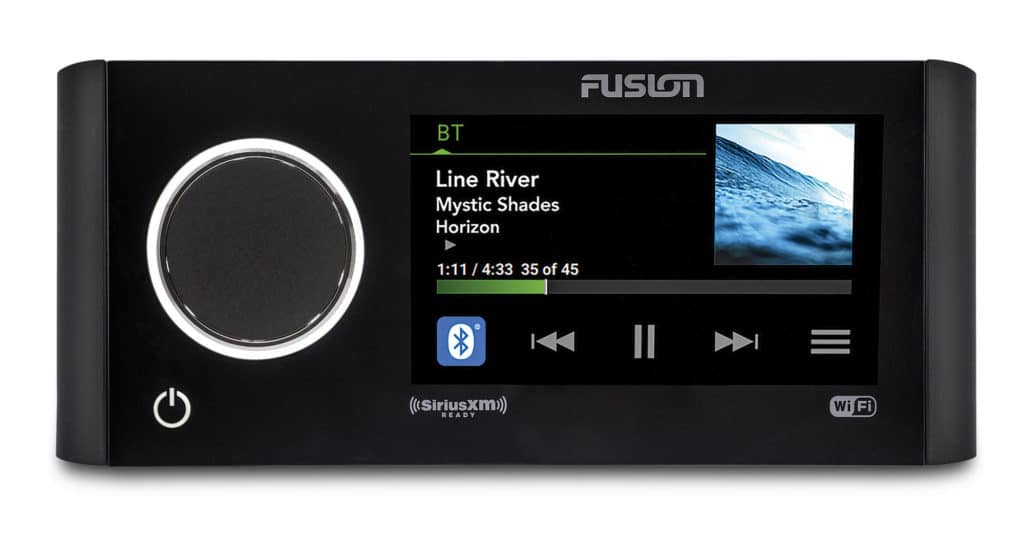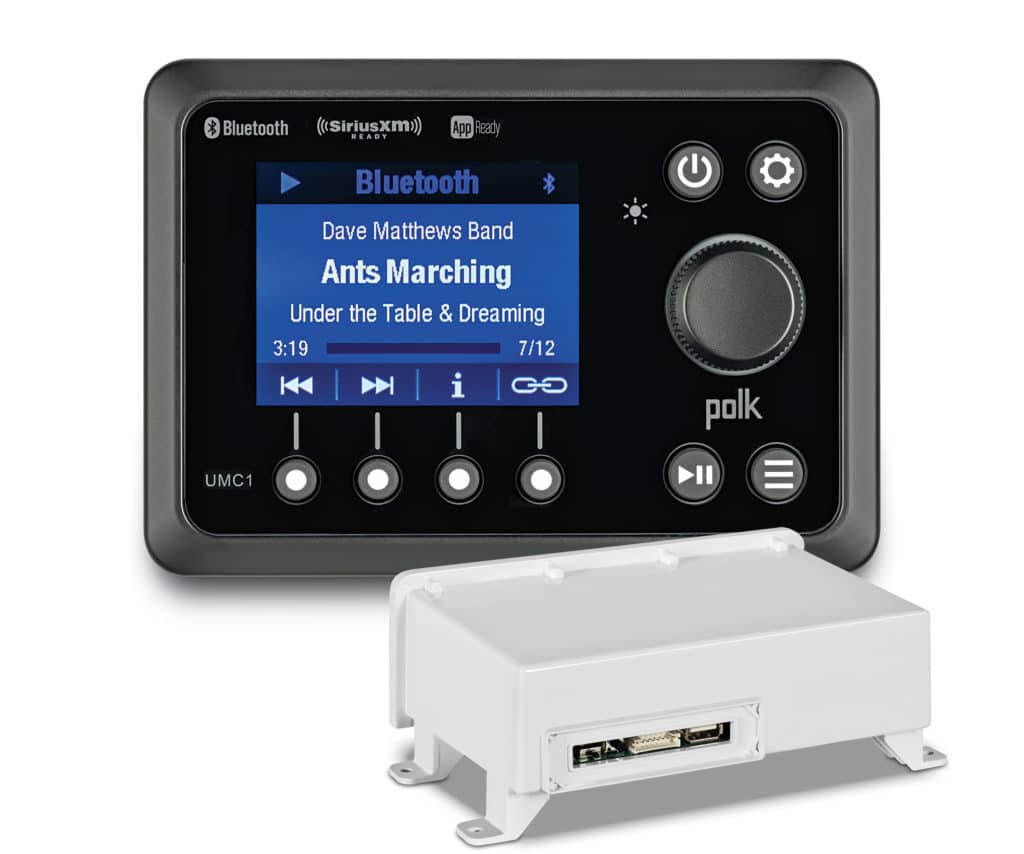Tony Bongiovi is the second cousin of rock artist Jon Bon Jovi and he’s spent decades in sound booths mixing music tracks to get just the right balance of highs and lows at just the right time to give you the full band sound. Polk Marine Audio enlisted Bongiovi to create the algorithms that do it in the company’s new systems. Polk’s and Bongiovi’s digital signal processing (DSP) solution has multiple objectives. First, it optimizes each stereo system by adjusting output settings to each specific speaker and amp in the set-up. Second, it adjusts the system output in any boat model to optimize it for that model, its speaker locations and stores that data so it can be uploaded as firmware to the system microprocessor in every subsequent boat of that model.
Fusion’s new Apollo system employs DSP technology too, though the New Zealand company uses its own audio engineers and technicians to do the job, not the American Bongiovi team who makes its biggest bread and butter now in the medical industry, managing frequencies in medical-imaging equipment. Take nothing away from the Kiwi’s though, their audio systems are powerful, clear and distinctly benefitting from properly applied DSP technology. Part of their success comes from the broader band streaming they achieve by offering Wi-Fi connectivity in addition to narrower band Bluetooth streaming. Additionally, while Polk uses an optional add-on module to do this brainwork, Fusion builds the magic into its Apollo series controllers.

But for both, the real magic to your ears happens when the music travels as data from the MP3 or other digital file and is streamed to your system. DSP transforms it by measuring each frequency instantly, nearly simultaneously and adjusting them all continuously to balance with the others and play to the very limit of each speaker and amp in their system. And the system does it so smoothly it can adjust from a vocal solo or a drum and cymbal roll without you missing a note. To make it even more mind boggling, the systems “listen” to ambient noises like wind, water and engine sounds and adjusts audio frequencies to overcome them without just drowning them with system- and ear-blowing power.
According to Matt Wood, vice president of sales for ASA Electronics, parent company of Polk, the benefits go beyond just great sound. “By eliminating distortion, amps don’t overheat and speakers aren’t damaged. And we’ve listened to our marine systems at 110 to 123 decibels at wide-open throttle and nobody asks to turn it down.”
To add even more perspective, a jump of just 6 decibels is doubling the noise before.
Most advertised DSP systems just “clip” the peaks of individual frequencies. Only Polk and Fusion, in our experience does this crazy balancing act.
And the sound is impressive.

On a Regulator center console at the Miami Boat Show, Polk’s system blazed out music at the full volume of the dual-amp system and it was as crisp and clean as listening to jazz at a piano bar. Not only was each note undistorted, nobody on board was holding their ears. Turns out, with audio volume, it is often the distorted peaks that bludgeon the ears. They were gone.
Read Next: Installing a Marine Stereo In Your Boat
Once upon a time, each audio system installed in any boat had to be hand-tuned. Some experts maintain those systems might often have been mistuned or never tuned, meaning the owner never got the audio experience he paid for. But with DSP, once the boatbuilder and the audio company agree on a system and speaker positioning and amplifier tuning, those parameters are permanently recorded in a firmware upload plugged into each system that assures accurate, optimum, concert-hall-quality music from their system. DSP makes sure you’re getting your money’s worth.









